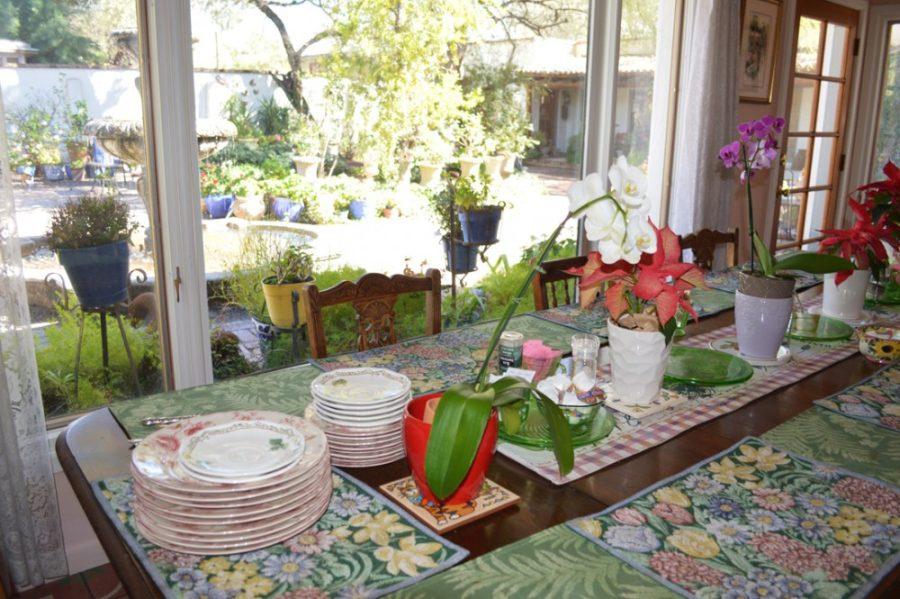The bustle of North Church Avenue and the heat of the asphalt radiated along the narrow road of Main Avenue and outside Tucson’s historic El Presidio Inn Bed & Breakfast.
Enclosed within the high walls of the cobblestone courtyard, tranquility resides and the temperature seems to cool, drawing guests away from the hectic world and into the oasis of Patti Toci’s El Presidio Inn.
“[I run] a 27-year-old business and some of my guests have been with me 20 years,” Toci said.
Toci and her former husband bought the inn with a desire to restore the century-old home to the glory it once had when the district was known as “Snob Hollow.”
The inn was built as one of many simple straw-and-mud adobe homes around 1876 in the El Presidio district. The Southern Pacific Railroad extension provided wealth to hire architects to design unique homes customized with verandas and carriage houses.
Tucson’s distinct Victorian/Spanish-style homes showcased the residents whom Toci called the “real movers and shakers” who “put together the needs we take for granted that didn’t exist then.”
The Snob Hollow residents used their money to create law and order separate from saloons, hospitals separate from barbershops and schools for the expanding community.
The splendor of the home faded as it passed through the hands of various owners who divided the home into rented apartments, adding a black asphalt parking lot where a massive fountain, lush garden and carefully laid cobblestone now sit.
Toci took charge of the 14-year restoration in which she used a jackhammer to chip away the asphalt, flew around the world to find furniture dating back to the 1700s and searched for bricks and material as old as the home to honor its legacy before opening the inn in 1985.
While visiting a rock quarry in Mexico, Toci wanted to purchase a fountain for her courtyard, but didn’t anticipate the unexpected expense of interior Mexican transportation costing more than the fountain.
A trusted construction worker Toci hired enlisted Mexican produce truck drivers to transport the fountain piece by piece over the course of seven months.
Now the focal point of the courtyard, the sound of the trickling water splashing from the fountain on the cobblestone was well worth the wait for the added serenity.
The grueling process required great patience and intensified the South Carolina native’s pioneer spirit as her business savvy grew and she labored to build her business.
Tucson’s Preservation Lead Planner Jennifer Levstik said the historic district where the inn is situated represents an endangered piece of history that, if neglected, prevents the current community from telling its own story if the residents don’t know the stories that led them to where they are.
Inside her four-bedroom, six-bathroom home, each doorframe, Mexican tile and antique piece has stories that captivated historians and writers over the years.
The eleven dark pine wood beams above the narrow 34-by-11 zaguan room were found in Apache Indian territory and brought back by a friend of the tribe in the early 1900s. Dragged by mule through the desert, Toci promised there are scratches on the beams from the trek and the carved initials of the sojourner.
In one of two front parlors, Toci reached behind a drawer of a bureau and with an audible click, a hidden compartment was revealed. The concealed gem of the Victorian era was a single-shot trigger folding pistol small enough to fit inside a woman’s muff, illuminating an unpleasant, unspoken aspect of a golden age.
From the concealed antique pistol to pine wood floors salvaged from trees in the Santa Rita Mountains, the inn is brimming with historical exploits about which Toci is ready to tell.
_______________
Follow Anna Mae Ludlum on Twitter.









